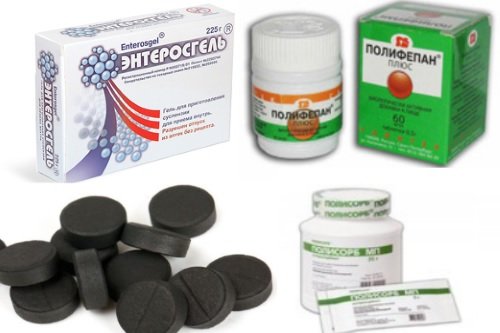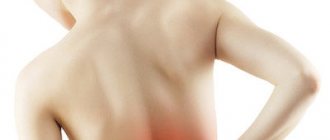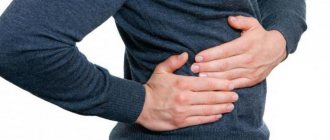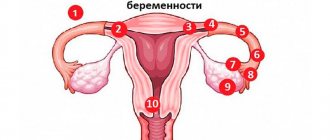Often in medical practice we have to deal with patients who are bothered by diarrhea, headache, fever and some other symptoms. These clinical manifestations occur in various diseases. Each of these symptoms has its own diagnostic value. For example, diarrhea is a sign of dysfunction of the gastrointestinal tract. This occurs with dysentery, salmonellosis, and rotavirus infection.
Diarrhea is a frequent bowel movement that changes the consistency of the stool. It becomes more liquid, mucus, blood, and pus may appear in it. Fever, weakness, headache - all these are manifestations of intoxication. A similar condition occurs during infectious pathology, when pathogenic microorganisms penetrate the blood. A combination of similar symptoms can occur in both adults and children.
Diarrhea and symptoms of intoxication in various diseases
Currently, a disease such as dysentery is common. This is an acute intestinal infection. The leading symptom of the disease is diarrhea. Dysentery affects the large intestine. The causative agent of the infection is Shigella. Human infection occurs through fecal-oral, contact-household, food and water routes. The food route is the most common. The cause of the disease is the consumption of poor-quality food and water contaminated with Shigella. Symptoms of the disease include:
- nausea;
- vomiting;
- diarrhea;
- frequent urge to go to the toilet;
- increased body temperature;
- headache;
- cardiopalmus;
- decreased appetite.
Acute dysentery develops within 1-2 days. First, fever and watery diarrhea appear. Blood and mucus may be found in the stool. Headache appears along with other signs of intoxication. Additional symptoms include abdominal pain and hemodynamic disturbances. Shigellosis is dangerous due to its possible complications. The latter include dehydration due to severe diarrhea, colon distension, kidney failure, intestinal bleeding, and rectal prolapse. In severe cases, death can occur if not properly treated.
Features of salmonellosis
The presence of diarrhea, headache, and fever may indicate salmonellosis. This pathology, like dysentery, belongs to the group of acute intestinal infections. The causative agents of the infection are salmonella. The mechanism of infection is the same as for dysentery. Most often, people become infected by consuming the following products:
- milk and fermented milk products containing a large number of bacteria;
- insufficiently thermally processed meat;
- birds;
- eggs;
- salads with an expired sell-by date.
The incubation period lasts from several hours to days. The most common are gastroenteric and gastroenterocolitic variants of the disease. Weakness, headaches, and diarrhea-type bowel movements are more pronounced in the gastroenteric form of salmonellosis. The stool quickly becomes watery. Soon it resembles swamp mud, as it has a greenish color and contains a lot of mucus. Patients develop fever and nausea. There is no tenesmus in this variant of the course of the disease. Often such patients develop dehydration. The main reason is repeated vomiting and severe diarrhea.
Possible complications of salmonellosis include the development of shock, swelling and edema of the brain, anuria, and acute renal dysfunction. To make an accurate diagnosis, laboratory testing of vomit, feces or blood is performed. In this case, the infectious agent is released. The epidemiological history is of no small importance.
Rotavirus infection
The appearance of diarrhea, fever and headache may be a sign of rotavirus infection. This disease is popularly called intestinal flu. Indeed, rotavirus infection is very similar in its course to the flu. The main difference is dysfunction of the stomach and intestines, which results in the development of diarrhea syndrome. The pathology is caused by rotaviruses. The peak incidence occurs in autumn and winter. An important feature of rotavirus infection is that it most often affects young children. At the same time, immunity is gradually developed. A person becomes infected through the fecal-oral or aerosol route. The nutritional route is critical. Rotavirus infection often occurs in outbreaks.
The incubation period lasts about 5 days. Symptoms of the disease include:
- vomiting;
- increased body temperature;
- diarrhea;
- runny nose;
- redness of the throat;
- pain when swallowing.
Symptoms come on suddenly. The frequency of stools during rotavirus infection reaches 10-15 times a day. At the beginning of the disease, the stool is liquid and yellow in color. Then it changes and resembles clay. The following clinical manifestations are possible in children:
- lethargy;
- moodiness;
- vomiting on an empty stomach.
Adult patients often experience an asymptomatic course of the disease.
Characteristics of typhoid fever
Intoxication and diarrhea syndromes are characteristic of an infection such as typhoid fever. This is an acute intestinal disease that has a cyclical course, which is manifested by damage to the lymphatic system, intoxication and rash. The infectious agent is transmitted through nutrition. The main reservoir and source of infection is humans. Typhoid fever is characterized by:
- damage to the lymphatic system;
- long incubation period (1-2 weeks);
- liver enlargement;
- severe intoxication (headache, fever);
- sleep disturbance;
- decreased appetite;
- the appearance of a small rash on the body;
- dry skin;
- stool disorder.
In the absence of proper therapy, the abdominal type is complicated by bleeding, anemia, and pneumonia. Against the background of this pathology, various internal organs are often affected. In this case, cholecystitis, myocarditis, cystitis, otitis, and peritonitis may develop.
Therapeutic measures
To get rid of diarrhea, fever and headaches, you need to eliminate the underlying cause of the disease. If the above symptoms are caused by an intestinal infection, treatment should include the use of antibiotics, bed rest, diet, infusion therapy, and the use of symptomatic drugs (Loperamide, Imodium, antipyretics). To eliminate headaches, you can use Analgin, Nurofen, Citramon and other drugs. Etiological treatment is aimed at destroying pathogens. To do this, the sensitivity of microbes to drugs is first determined. For typhoid fever, the following antimicrobial drugs are often prescribed: Levomycetin, Biseptol, Ampicillin. Such patients are advised to eat a high-calorie diet and drink plenty of fluids.
Treatment of salmonellosis involves the use of fluoroquinolones and protected penicillins. Antibiotics are indicated only for moderate or severe forms of the disease.
Treatment for rotavirus infection differs significantly. In this situation, antibiotics are useless. Treatment includes taking sorbents, dehydration, and a strict diet. If a child has diarrhea, it is necessary to exclude milk and fermented milk products from the diet. The temperature should be reduced only if it is above 38.5° C. To reduce the temperature, children under 3 years of age are prescribed suppositories (Cefekon). At an older age, Paracetamol may be prescribed. The dose for each sick child is selected individually by the doctor. When diarrhea is combined with fever, you can take Enterofuril or Enterol. They are indicated for prolonged diarrhea.
It must be remembered that the appearance of diarrhea, high fever and headache is not always associated with infection.
Similar symptoms can also occur in case of poisoning of non-microbial etiology (salts of heavy metals, poisonous mushrooms and plants, pesticides).
In this situation, treatment involves gastric lavage, taking antidotes, enterosorbents, and drinking plenty of fluids. Thus, the appearance of headache, fever and diarrhea in most cases is associated with acute intestinal diseases.
Eating uncooked food can lead to indigestion. Diarrhea and headache are signs of intestinal infections. What measures can and should be taken independently, without waiting for a doctor, at the first symptoms of an acute intestinal infection?
What should you do first?
Fever and diarrhea indicate serious disorders in the patient’s body. To bring down the temperature, you can use cranberry juice. To relieve vomiting, just chew a fresh mint leaf.
Infection with intestinal infections leads to intoxication of the body. Pathogenic bacteria release toxic substances during their life processes, multiply in the intestinal lumen, and sometimes even enter the blood.
You can get rid of toxins using adsorbents (Enterosgel, Polysorb).
For intestinal spasms, it is recommended to take No-shpa and Papaverine. Infectious diarrhea develops quickly, depriving the patient of essential fluids.
The patient suffers from dehydration, which manifests itself in the form of the following symptoms:
- A person is constantly thirsty.
- The patient becomes lethargic and drowsy;
- Loss of water affects the general condition: blood thickens, there is a threat of thrombosis;
- The patient's eyes become sunken and the temperature rises.
- The skin becomes dry.
How dangerous is typhoid fever?
Defeat by the causative agent of typhoid fever manifests itself in the form of the following symptoms:
- typhus affects the lymphatic system of the intestine, which can manifest itself as intestinal bleeding;
- The patient develops diarrhea and headache, and there is a disturbance of consciousness similar to infectious delirium;
- Jaundice and pain in the right hypochondrium may occur;
- The patient complains of lack of appetite;
- A rash can be seen on the human body.
Complications include bleeding from the intestines.
Clinical manifestations of poisoning
If an adult patient has diarrhea and a headache, it is necessary to determine as quickly as possible what exactly caused the illness. To do this, it is advisable to pay attention to the clinical manifestations accompanying indigestion.
When poisoned by poor-quality food, the patient develops:
- Pain in the right hypochondrium.
- Nausea.
- Pain in the intestines.
- Diarrhea.
- Vomit.
Headache joins the symptoms later, when intoxication of the body increases. In case of mushroom poisoning, discomfort in the stomach persists for a long period, the headache lasts longer, the patient’s pulse drops and the temperature rises.
With carbon monoxide poisoning, headache is the main symptom. It presses in the temporal, frontal part and encircles the head. Symptoms of body intoxication also appear: nausea, vomiting, and sometimes diarrhea.
Signs of salmonellosis
You can become infected with salmonellosis by eating undercooked meat and fish. The source of the disease can be eggs and poultry. You should not buy ready-made salads in the store, as they spoil quickly. The incubation period can last several days.
After eating foods containing salmonella, the patient experiences the following symptoms:
- Attacks of headache and nausea appear.
- There is mucus in human stool.
- The feces take on a characteristic greenish tint.
- The patient quickly develops signs of fever.
- Active reproduction of parasites leads to brain damage. The patient's kidney function is impaired.
To make a diagnosis, the patient must undergo an examination. After determining the type of pathogen, the doctor prescribes treatment.
First aid
You should immediately consult a doctor when a sharp attack of pain occurs, accompanied by diarrhea, nausea, vomiting and fever. Before the ambulance arrives, the patient needs to lie down in the most comfortable position and loosen tightly buttoned clothes. You can drink some clean water.
If there are no severe symptoms, headaches and diarrhea can be treated at home. But if symptoms persist for a long time, be sure to undergo a medical examination, tests and follow the doctor’s advice.
To protect against dehydration, drink a lot of water and Regidron solution, which restores the balance of electrolytes. Everything is removed from food, leaving only acceptable dishes:
- rice porridge;
- chicken soup with white bread croutons;
- boiled eggs;
- mashed potatoes;
- meat and fish with low fat content;
- sweet tea or compote, rice water, water.
You need to be careful when using tablets. Activated carbon and other natural sorbents are almost always present in the treatment of diarrhea. But substances such as Loperamide or Smecta can only be taken with the permission of a doctor if symptoms last for a long time.
If the headache and diarrhea do not go away within a week, you need to apply for a test and consult a therapist. Additionally, the doctor may prescribe other examinations.
How does rotavirus infection manifest?
Symptoms of rotavirus infection resemble those of the flu. The patient experiences diarrhea, fever and headache.
This disease is called intestinal flu.
Most often, infection occurs in autumn and winter. Young children are at risk. You can catch the infection in 2 ways: airborne and fecal-oral.
When the virus enters the body, it manifests itself within 5 days. Symptoms of the disease include:
- The patient suffers from bouts of vomiting and his temperature rises.
- A runny nose begins and a sore throat occurs when swallowing food.
- A sign of non-zopharyngitis of viral etiology is redness of the pharynx.
- The patient suffers from intense diarrhea.
- If your baby is infected, pay attention to changes in his behavior. He becomes lethargic and is constantly capricious.
- Some people have stomach flu without obvious symptoms. And this poses a danger to others. The person does not experience discomfort and continues to work. Through contact with others, an infected person can infect other people.
How to eliminate symptoms?
A doctor will not be able to determine by external signs alone the reason that the patient has a headache, vomiting, nausea and diarrhea. To make an accurate diagnosis, it is necessary to undergo tests. At the same time, if you simply use only symptomatic treatment, you can worsen the disease and cause additional complications.
Remember! Treatment of intestinal infections and food poisoning directly depends on the course of the disease and the degree of intoxication of the body.
Sometimes diarrhea is accompanied by sharp pain. In this case, it is not recommended to use painkillers, since they only alleviate the condition, but do not eliminate the source of the disease. In addition, the effect of the drug can blur the picture of the disease and prevent the doctor from making an accurate diagnosis.
Dysentery
The source of infection can be dirty fruits and vegetables. Harmful bacteria are found in raw water. The disease develops rapidly, depriving a person of fluid.
The patient begins to have watery diarrhea. Attacks of nausea and vomiting appear. But soon the patient begins to experience symptoms of damage to the large intestine. Copious, loose and watery stool gradually becomes scanty, mucous, and at the height of the disease it resembles just ordinary spit, which experts call “rectal spit.” A patient with dysentery is characterized by the presence of streaks of mucus and blood, and the entire stool becomes a scanty, bloody, mucopurulent lump. The manifestation of dysenteric colitis is accompanied by excruciating and cramping pain in the large intestine, and a false urge to defecate.
How is diagnostics carried out?
To determine the cause of the disease, a patient with suspected “intestinal flu” must undergo a rapid test for rotavirus infection.
The patient's stool is also checked for the presence of harmful bacteria (bacteriological examination for the disinfectant group). However, doctors receive the result of bacteriological culture within 5 days. Serological methods are used to determine antibodies. You can find out about the presence of infection based on data obtained after a blood test.
PCR research is used to determine bacterial genes in the patient’s biological materials. If necessary, the patient is referred for an intestinal examination.
During the process of rectomanoscopy, specialists study the condition of the intestinal mucosa in different areas. This way you can identify inflammation, ulcers and neoplasms that can cause diarrhea.
If viruses are detected, the patient is prescribed antiviral drugs. The causative agents of acute intestinal infections can be destroyed with the help of antibacterial drugs (Ciplfloxacin, Ofloxacin).
Infectious diarrhea cannot be treated with antidiarrheal drugs. If dysentery is suspected, the patient should be taken to the hospital immediately. Practice good hygiene to prevent further spread of infection.
To relieve symptoms of intoxication after eating poor-quality food, it is necessary to rinse the stomach. To alleviate the condition, the patient is prescribed cleansing enemas.
Treatment of diarrhea caused by pancreatitis involves taking enzymatic drugs (Festal, Mezim).
If you have infectious diarrhea, you must adhere to a strict diet. Restrictions relate to hygiene. The patient should not share utensils. This will help prevent further spread of the infection.
A patient suffering from intense diarrhea needs a lot of fluid. To restore electrolyte balance, you can use mineral water without gas.
The patient's diet should not contain foods that contribute to increased gas formation. Avoid fresh fruits, vegetables and herbs. Confectionery products that enhance fermentation by acidifying the intestinal environment are prohibited.
Milk enhances intestinal peristalsis. A weakened body has difficulty digesting fatty meat. If you have diarrhea, you should not eat smoked meats or marinades.
Prevention of intestinal diseases
Poor hygiene can very quickly lead to infectious and long-lasting diarrhea. The disease begins after eating unwashed fruits and greens. When purchasing food from a store, always check the expiration date.
The risk of infection increases when eating raw fish, and river fish are often infected with parasites (opisthorchiasis). Milk purchased from hand must be heat treated.
The source of infection can be spoiled food. Do not use utensils that were used by the patient. Clean rooms regularly using disinfectants.
Therapist. Practicing doctor. Work experience - 9 years.
Intestinal upset is a problem that can affect planned activities and ruin your mood. The necessary medications that can quickly and effectively solve the situation are not always at hand. However, before carrying out treatment, it is important to clearly determine the reasons for which the malaise developed. Why does diarrhea and headache occur?
Preventive measures
The main prevention of food poisoning and infection is compliance with the rules of personal hygiene and care when choosing products, heat treatment of food, monitoring expiration dates and quality of production.
If typical symptoms appear, you should refrain from visiting public places due to the risk of spreading infection in large groups (kindergartens, manufacturing enterprises, public catering establishments).
Source
Intestinal upset is a problem that can easily affect your plans, ruining your mood and overall well-being. The situation is much more serious when it is accompanied by additional symptoms, for example, pain in the head, dizziness, fever, fever. Why diarrhea and headache occur at the same time, only a doctor can say, and he also prescribes a treatment plan.
Features of pain
If you have a headache and loose stools, there may be several reasons. It is important to understand how a headache develops and what it indicates, because these two symptoms often accompany each other.
Pain in the head appears due to irritation of receptors located in the neck. This occurs due to sudden muscle spasms, circulatory problems or vascular spasms. All headaches are divided into:
Primary headaches include those that are directly related to the activity of the blood vessels of the head: migraines, spasms, tension headaches, high or low blood pressure. Head pain that occurs during diarrhea is secondary, as it is considered a symptom of another condition.
You should think about proper treatment if a complex of symptoms appears immediately:
- weakness;
- nausea and vomiting;
- loose stools;
- dizziness;
- temperature;
- aches.
The reasons for the appearance of these several symptoms at the same time can be quite serious, so it is worth understanding them before treatment.
Causes of diarrhea along with headaches
Diarrhea that accompanies headaches can be caused by the following factors:
- poisoning;
- penetration of rotavirus;
- salmonella infection;
- entry into the digestive system of the dysentery bacillus.
If the stool has become liquid, there is severe weakness, and your health is accompanied by headaches, it is important to exclude the above reasons.
Symptoms of poisoning
Poisoning develops due to eating low-quality, expired or contaminated food products with pathogenic viruses. The likelihood of the condition occurring is not affected by either gender or age. This phenomenon occurs even during pregnancy, when a woman strives to eat very carefully and exclude from her diet all foods that could cause harm.
The intensity of the symptoms experienced may vary from person to person. It all depends on the functioning of the immune system. As a rule, the first signs of food poisoning appear 2-3 hours after such food enters the body.
Food poisoning is characterized by:
- pain in the intestines;
- spasms;
- frequent urge to defecate;
- weaknesses;
- dizziness;
- headaches;
- nausea and vomiting.
Treatment consists of washing the stomach or intestines (depending on how much time has passed since consuming low-quality products). It is recommended to take a sorbent drug that will help remove toxic compounds from the body as soon as possible.
If blood appears in the stool, the temperature rises and breathing problems appear, you need to call an ambulance or go to the hospital yourself.
Symptoms of rotavirus infection
Rotavirus infection, or intestinal flu, can affect both adults and children. The symptoms are as follows:
- severe headache;
- weakness;
- frequent watery vomiting;
- temperature;
- stomach ache;
- dizziness;
- diarrhea.
In more rare cases, rotavirus infection is accompanied by inflammation of the mucous membranes, and is expressed in the form of sore eyes, reddened throat and runny nose.
You can become infected either through food or from a carrier of the infection, another person.
Rotavirus infection is never treated with antibiotics. This pathogen is a virus, not a bacterium, so the use of this drug will be useless, but will have a negative effect on the human body, its immune system and intestinal microflora.
If you have rotavirus, you should not self-prescribe medications. Only a doctor can choose the exact medicine. It makes sense to take antipyretics only after the thermometer shows more than 38.3 degrees. A high temperature is an opportunity for the body to cope with the infection on its own, without the help of medications.
Symptoms of salmonellosis
With salmonellosis, your head and stomach may also hurt, and your health may be accompanied by severe weakness. Infection usually occurs after eating certain types of foods, namely:
- eggs;
- salads dressed with mayonnaise;
- poorly cooked meat.
Salmonellosis rarely occurs without fever. The stool contains a large amount of mucus and is dark green in color. It is very important to quickly seek medical help to begin qualified treatment.
It is useless to use traditional medicine for such an infection, and the lack of adequate treatment can lead to serious complications, namely:
- kidney problems;
- anuria;
- swelling of the brain.
In addition to drugs that have an effect on the infectious agent, sorbent agents are prescribed, as they help the body get rid of toxins that are formed as a result of the vital activity of parasites.
If you vomit repeatedly, it is recommended to call emergency services. There is a high risk of dehydration, which often leads to death.
Symptoms of dysentery
Dysentery affects the large intestine. When the disease occurs, the following signs appear:
- headache;
- diarrhea;
- chills;
- arrhythmia;
- pain in the stomach;
- weakness;
- temperature.
It is worth noting that when the dysentery bacillus penetrates, the frequency of bowel movements can reach 25–30 times a day, which significantly increases the risk of developing dehydration. It is important to ensure that the patient drinks a lot of water, as the condition may become critical.
Infection occurs through the fecal-oral route. At first, there are few bowel movements, then their volume gradually increases. The stool may contain fragments of blood and pus.
The most intense period of symptoms is the first 7 days. Then the signs of infection gradually fade away. We can talk about a complete cure for the disease only 2–3 weeks after the start of therapy.
- from diet;
- use of sulfa drugs;
- bed rest;
- drinking plenty of water;
- use of chloramphenicol to stop diarrhea.
After completion of treatment, three laboratory tests are recommended to prevent re-infection. It is important to carry out high-quality cleaning in the house so that there are no infectious agents left anywhere.
Obviously, the combination of a headache and intestinal upset may indicate the presence of serious diseases, so it is extremely important not to self-medicate, but to seek qualified help when the first negative symptoms appear. In a hospital setting, you can take all the necessary tests and accurately determine the cause of your symptoms. Early treatment is the key to a quick recovery without complications!
The information on our website is provided by qualified doctors and is for informational purposes only. Don't self-medicate! Be sure to consult a specialist!
Gastroenterologist, endoscopist. Doctor of Science, highest category. Work experience 27 years.
Headache and diarrhea are a fairly common combination of symptoms of various diseases and conditions.
In fact, everyone has encountered similar manifestations and reacted differently to them.
The provoking factors for such symptoms can be various. When nausea, weakness, and fever are added to them, they indicate dangerous pathological processes.
In any situation, prolonged manifestation of unpleasant sensations in the head during diarrhea will be a signal to visit a specialist.
It is necessary to identify the root cause of the pathology and select a therapeutic regimen.
Causes

Diarrhea accompanied by headache can act as a result of nervous tension, emotional exhaustion, or pregnancy. In this case, the symptoms will disappear as soon as the patient eliminates personal experiences and is able to calm down. The situation takes a serious turn in the case of pathological prerequisites for such a condition. Their list will be presented below.
Intoxication of the body
Eating low-quality food can result not only in diarrhea, but also in general weakness, including headaches. The manifestations of symptoms mainly depend on the amount of food eaten and the degree of its harmfulness. The first signs of poisoning appear 1-2 hours after consuming a spoiled or poorly processed product. They consist of the following states:
- diarrhea;
- severe pain in the head;
- general weakness of the body;
- gagging;
- pain, cramps, colic in the abdomen;
- fever, heat;
- intestinal spasms.
Treatment consists of helping the body eliminate harmful agents by gastric lavage, enemas, and taking laxatives and absorbents.
Rotavirus infection
The disease can be contracted through dirty hands, direct contact with an infected individual, drinking tap water that has not been boiled, or eating unwashed fruit. In the common people, the disease acquired the name “intestinal flu”; its main symptom is repeated diarrhea, which acts as an attempt by the body to get rid of the main pathogen. The process does not require a struggle, since it will go away on its own after the main cause of the disorder is eliminated. The clinical picture is supplemented by the following conditions:
- severe nausea and vomiting, complicating treatment with oral medications;
- symptoms of intoxication of the body in the form of elevated body temperature, headache, dizziness, fatigue and weakness;
- unpleasant feelings in the abdomen, which indicates a poor response of this organ to medicinal or traditional treatment tactics;
- changes affecting feces: they become yellowish, endowed with a sour odor;
- Sometimes signs of a cold appear - redness in the throat, cough, runny nose.
Headache, diarrhea and fever: causes and treatment
Headache can be primary or secondary. Primary is an independent pathological process. It includes migraine, tension pain, and cluster discomfort.
Secondary headache is a symptom of other diseases.
In such a situation, in all cases it is associated with additional symptoms: nausea, weakness, vomiting, diarrhea, fever, stomach pain, etc.
Headaches can vary in severity, nature, and location.
Diarrhea or diarrhea is the frequent passing of liquid stool.
The main provoking factor for this condition is a malfunction of the digestive tract.
But diarrhea is also a symptom not directly related to a gastrointestinal disorder. This is often associated with disruptions in intestinal motility or metabolic processes.
The intestines are most susceptible to difficulties in the endocrine system, but often react to high blood pressure and the use of certain medications.
When a number of unpleasant signs are observed (diarrhea, fever, headache, gag reflex, nausea, weakness), this indicates a serious pathological process.
Illnesses characterized by symptoms such as vomiting, nausea, diarrhea, weakness, headache and often fever can have a wide range of possible illnesses.
To determine what exactly the patient is suffering from, it is necessary to immediately seek help from doctors.
Brain infections
Meningitis or other infectious lesions in the brain can manifest as nausea, lethargy with unconsciousness, and headaches that get worse at night.
Approximately 1% of citizens who seek the help of doctors are exposed to a similar disease. If there is a suspicion of this pathology, you should immediately contact a specialist and not begin self-medication.
Poisoning with poisonous mushrooms
Intoxication with mushrooms can appear within 15 minutes to a week from the moment of their use.
Incessant vomiting and nausea are the initial signs of mushroom poisoning.
Then the following symptoms will appear: diarrhea, intense headache, and fever. When the necessary measures are not taken during the first hours of illness, death often occurs.
In particular, it will be dangerous to use toadstool, the fatal outcome of which is approximately 70%.
Emergency care consists of gastric lavage and emptying the gastrointestinal tract of contents.
You need to drink liquid to provoke a gag reflex, do enemas with warm water for maximum intestinal lavage.
If you suspect mushroom intoxication, you should immediately call a doctor.
Delay is fraught with dangerous consequences for life. In particular, children's bodies are quickly affected; they are prohibited from consuming mushrooms under 3 years of age.
After 2-3 days without proper therapy, the liver may increase in size, signs of jaundice will appear, and coma is possible. Liver failure is fatal.
Food poisoning
Anyone can be poisoned by products of poor quality, which at first glance seem fresh and edible.
Symptoms: nausea, vomiting, increasing diarrhea, fever with increasing temperature, headache and weakness, which appear after a heavy meal, in particular with the intake of alcoholic beverages.
This may indicate food intoxication and disruptions in the functioning of the digestive tract.
Vomiting and diarrhea should not be suppressed. The body needs to cleanse itself of harmful products. 4-5 tab. activated carbon, calculated as 1 pc. per 10 kg of body weight, significantly improve your well-being.
The first day you need to refrain from eating, drink water, clean or slightly salted, 3-5 sips, but often.
Constant diarrhea is the reason to visit a specialist. It is necessary to prevent dehydration of the body. In a situation where a child is intoxicated, doctors should be called without delay.
Rotavirus infection
Infectious gastroenteritis, often called intestinal flu, includes symptoms of influenza and gastrointestinal problems:
- Excruciating pain in the head.
- Multiple vomiting throughout the day, which prevents the use of certain medications.
- Diarrhea that repeats more than 5-6 times. It is quite difficult to stop it. On the first day of infection, a sour aroma appears during bowel movements. The color of stool changes from yellow to gray-yellow.
- My stomach hurts a lot.
- Continuous nausea.
- Temperatures, often exceeding 38 degrees, are not recommended for churning, since the pathogen dies directly under such conditions.
- Weakness and dizziness.
- Inflammation inside the throat, which is accompanied by cough, rhinitis, and lacrimation.
This infectious disease will soon spread from one person to another:
- During sneezing and coughing.
- Through dishes, personal belongings, hygiene items.
- Unboiled water also serves as a conductor during infection - new medications for its purification are not able to prevent the spread of the pathogen.
- Unwashed hands, often in children, and unwashed vegetables and fruits are an additional source of infection.
Children often get sick, in particular those who attend school and kindergarten. In an attempt to eliminate the disease on their own, adults can catch the virus.
The pathogen will spread quickly. After recovery, immunity from such a disease will remain.
The acute form of the disease in adults lasts for 2-3 days; children endure infection more difficult and longer – up to a week.
Within 7 days after recovery, the adult or child will be infectious virus carriers.
Treatment
If you have a headache and diarrhea, you need to urgently take treatment measures. They depend on the cause that caused this condition.
For food poisoning
- To avoid dehydration, the patient needs to consume as much fluid as possible. Warm water, warm green tea, jelly, fruit drink, herbal decoction/infusion will do.
- To help the intestines cleanse themselves of toxins, the activity of which causes diarrhea, it is necessary to take sorbents. The most accessible of them is activated carbon. Enterosgel, Smecta, Polysorb are also prescribed.
- Regidron solution will help restore the moisture balance in the body. One packet of powder is dissolved in a liter of water and then taken orally throughout the day.
Headache due to food poisoning is the result of severe intoxication of the body. Once the toxins are released, the symptom will disappear. Therefore, taking medications against headaches is not advisable.
For viral diarrhea
Viral phenomena are common accompaniments of gastrointestinal disorders. As they progress, the use of the following medications for diarrhea, headache, and weakness is indicated.
- Products to prevent electrolyte loss and dehydration. Regidron is most often used in practice.
- Enterosorbents and enzymes - activated carbon, Smecta, Enterosgel. They help absorb toxins and quickly remove them from the body with feces.
- Probiotics to normalize intestinal microflora. These are Linex, Bifiform, Vitaflor, Normoflorin.
- Antipyretics for fever accompanied by headache and general deterioration of health.
- To eliminate signs of diarrhea, doctors often prescribe drugs that bind the contents of the intestines. This is Immodium or its budget analogue Loperamide.
For infectious diarrhea
If loose stools coupled with a headache are caused by an infection, only a doctor can prescribe treatment. Typically, therapy is complex, involving a pathogenetic, etiotropic and symptomatic scheme.
- Taking rehydrants to restore fluid balance is mandatory.
- The use of enterosorbents is justified in case of severe diarrhea. They effectively bind and remove harmful bacteria and microbial toxic elements from the body.
- Probiotics saturate the body with beneficial bacteria and stabilize its environment.
- Etiotropic drugs - antibiotics - fight bacterial infection, but the prescription is strictly for medical reasons - Levomycytin, Ampicillin, Doxycycline, Metronidazole.
- To eliminate individual symptoms, it is customary to use painkillers (Ketanov, Ketorol, Spazmalgon), antiemetics (Eskazin, Torekan).
Treatment methods for diarrhea, headache and fever
Therapy will vary depending on the causative agent of the disease. During an acute infection in the intestines, treatment involves the following points:
- Following bed rest.
- Diet food. On the first day, it is possible to consume only salted rice in water, a decoction of it, weak tea with sugar, crackers, after which mashed potatoes, pureed boiled vegetables and soups are introduced over time. Fermented milk products, meat, fish and confectionery products, and carbonated water are prohibited.
- Use of antimicrobial agents. Choose medications from the group to which the disease virus is susceptible (Biseptol, Levomycytin, Ampicillin).
- Symptomatic medications during disruptions in the digestive tract and diarrhea (Loperamide, Imodium).
- Anesthetics and antipyretic drugs during fever and headaches (Nurofen, Citramon, Analgin).
It is necessary to drink more often in order to restore fluid loss along with the gag reflex and diarrhea.
The therapeutic regimen for rotavirus infection will be different. The pathogen is immune to antimicrobial agents, so it makes no sense to use them.
First of all, the patient is required to be given sorbents or administered intravenously when he is in a difficult condition.
It is necessary to carry out dehydration - to restore the water and salt balance inside the body.
Powders for preparing the solution Electrolyte or Regidron are extremely effective for this purpose. They are intended for domestic consumption.
However, when dehydration is severe, the patient should be hospitalized and given saline and glucose.
The temperature during a rotavirus infection does not go down when it does not exceed 38.5 degrees - directly at such indicators the pathogen dies, when it is brought down, therapy is significantly delayed.
It is necessary to follow a strict dietary diet, eliminating all food products that can irritate the gastrointestinal tract, including fermented milk.
Antibacterial agents are used only when vomiting and diarrhea have stopped. Otherwise, the active ingredients simply do not have time to be absorbed.
When headache and fever are associated with diarrhea, in many situations this is associated with viral infections within the intestines.
In some cases, the digestive tract may become damaged during infection with a viral agent.
It is necessary to prevent dehydration, so you need to immediately contact a specialist and do tests to accurately identify the virus and begin therapy as soon as possible.
Diarrhea, nausea, headache and fever are symptoms of one or more pathological processes, taking into account their combination with themselves or other laboratory manifestations.
When you have a headache, nausea and vomiting, you should immediately consult a doctor.
Only a specialist is able to establish the initial cause of the disease and select appropriate therapy at home or in an inpatient setting.
Treatment
What to do if you have a headache, nausea and diarrhea? This is just a manifestation of various diseases. In the absence of fever and headache with diarrhea and nausea, home therapy, plenty of fluids and rest are sufficient. You can use effective traditional medicine.

For vomiting and diarrhea in children, rehydration therapy should be carried out to avoid dehydration. Depending on the cause of the pathology, the following medications are used to treat diarrhea with headaches:
- enterosorbents and absorbent agents;
- detoxification drugs for intravenous administration;
- anti-inflammatory drugs (for gastritis, duodenitis, colitis);
- antibiotics (for bacterial infections);
- antiviral drugs for viral infections.

If the intestinal microflora is disturbed, a sick person must be prescribed probiotic preparations, and vitamin complexes are prescribed to strengthen the immune system and restore the body’s strength after illness.
Treatment of diseases of the gastrointestinal tract is necessarily comprehensive, it also involves following a diet. Clinicians prescribe table No. 4, a balanced protein diet, including easily digestible foods. You can drink a lot of liquid: clean water, unsweetened rosehip decoction, lingonberry or cranberry juice, green tea.










